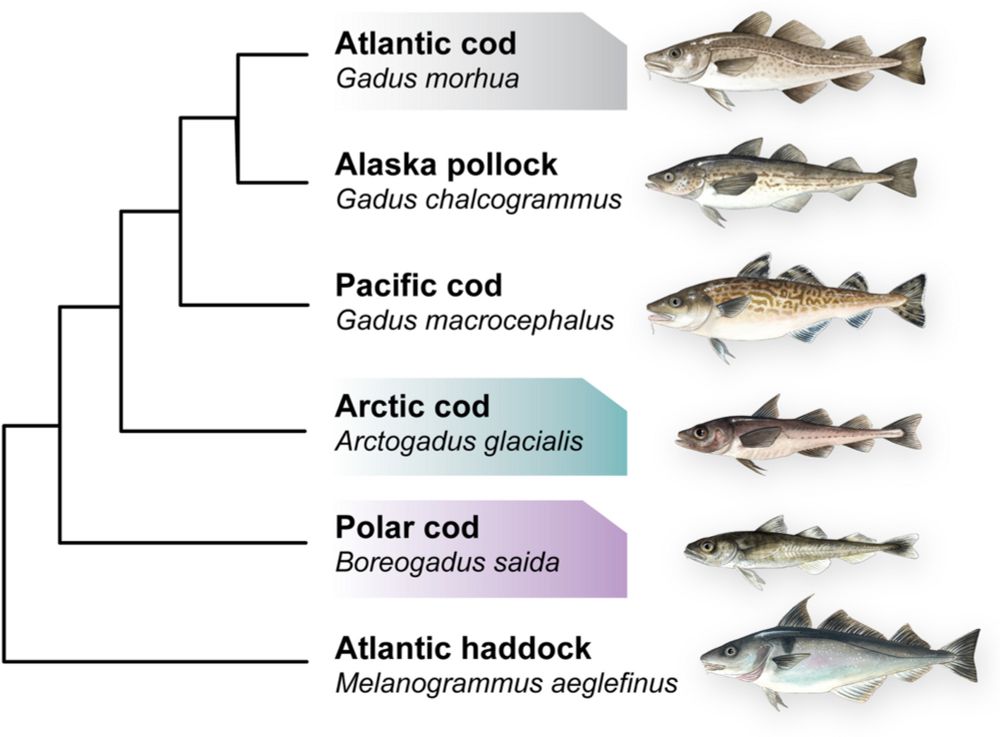Kearly & Nelson discuss historical and modern approaches and their limitations for identifying and characterizing plant short open reading frame-encoded peptides, and how improved techniques are rapidly changing the field 🌱
🔗 doi.org/10.1093/jxb/...
#PlantScience 🧪

Kearly & Nelson discuss historical and modern approaches and their limitations for identifying and characterizing plant short open reading frame-encoded peptides, and how improved techniques are rapidly changing the field 🌱
🔗 doi.org/10.1093/jxb/...
#PlantScience 🧪

🔗 doi.org/10.1093/gbe/evaf205
#genome #evolution #birds

🔗 doi.org/10.1093/gbe/evaf205
#genome #evolution #birds

🔗 doi.org/10.1093/gbe/evaf201
#genome #evolution #CRISPR

🔗 doi.org/10.1093/gbe/evaf201
#genome #evolution #CRISPR


A handful of countries hold >70% of Earth’s terrestrial biodiversity — packed with species found nowhere else. These places are evolution’s playground… and extinction’s front line.
#Biodiversity 🌿 #GenomeSequencing 🧬
#Genomics 🔬 #ConservationGenomics 🌍



A handful of countries hold >70% of Earth’s terrestrial biodiversity — packed with species found nowhere else. These places are evolution’s playground… and extinction’s front line.
#Biodiversity 🌿 #GenomeSequencing 🧬
#Genomics 🔬 #ConservationGenomics 🌍
Learn more in this week's issue of Science: https://scim.ag/48bLsGI

Learn more in this week's issue of Science: https://scim.ag/48bLsGI

Highlight: Genome Duplication in a New Zealand Snail Holds Clues for the Persistence of (A)sexual Reproduction
🔗 doi.org/10.1093/gbe/evaf198
#genome #evolution #WGD

Highlight: Genome Duplication in a New Zealand Snail Holds Clues for the Persistence of (A)sexual Reproduction
🔗 doi.org/10.1093/gbe/evaf198
#genome #evolution #WGD
Published in The Wildlife Society @thewildlifesociety.bsky.social

Published in The Wildlife Society @thewildlifesociety.bsky.social

With Josefin Titelman from @biovitenskap.bsky.social
Published in @nature.com

With Josefin Titelman from @biovitenskap.bsky.social
Published in @nature.com
@molecology! We test whether🐦with ⬆️dispersal propensity differ in the nº CpGs across the genome, with the hypothesis that⬆️CpGs allow for⬆️epigenetically-driven plasticity facilitating environmental coping
onlinelibrary.wiley.com/doi/10.1111/...

@molecology! We test whether🐦with ⬆️dispersal propensity differ in the nº CpGs across the genome, with the hypothesis that⬆️CpGs allow for⬆️epigenetically-driven plasticity facilitating environmental coping
onlinelibrary.wiley.com/doi/10.1111/...
Published in Conservation Biology @scbeurope.bsky.social
Published in Conservation Biology @scbeurope.bsky.social
🔗 doi.org/10.1093/gbe/evaf184
#genome #evolution #TEsky

🔗 doi.org/10.1093/gbe/evaf184
#genome #evolution #TEsky
@unioslo-cees.bsky.social
@biovitenskap.bsky.social
link.springer.com/article/10.1...

@unioslo-cees.bsky.social
@biovitenskap.bsky.social
link.springer.com/article/10.1...




🔗 academic.oup.com/mbe/article/...

🔗 academic.oup.com/mbe/article/...




